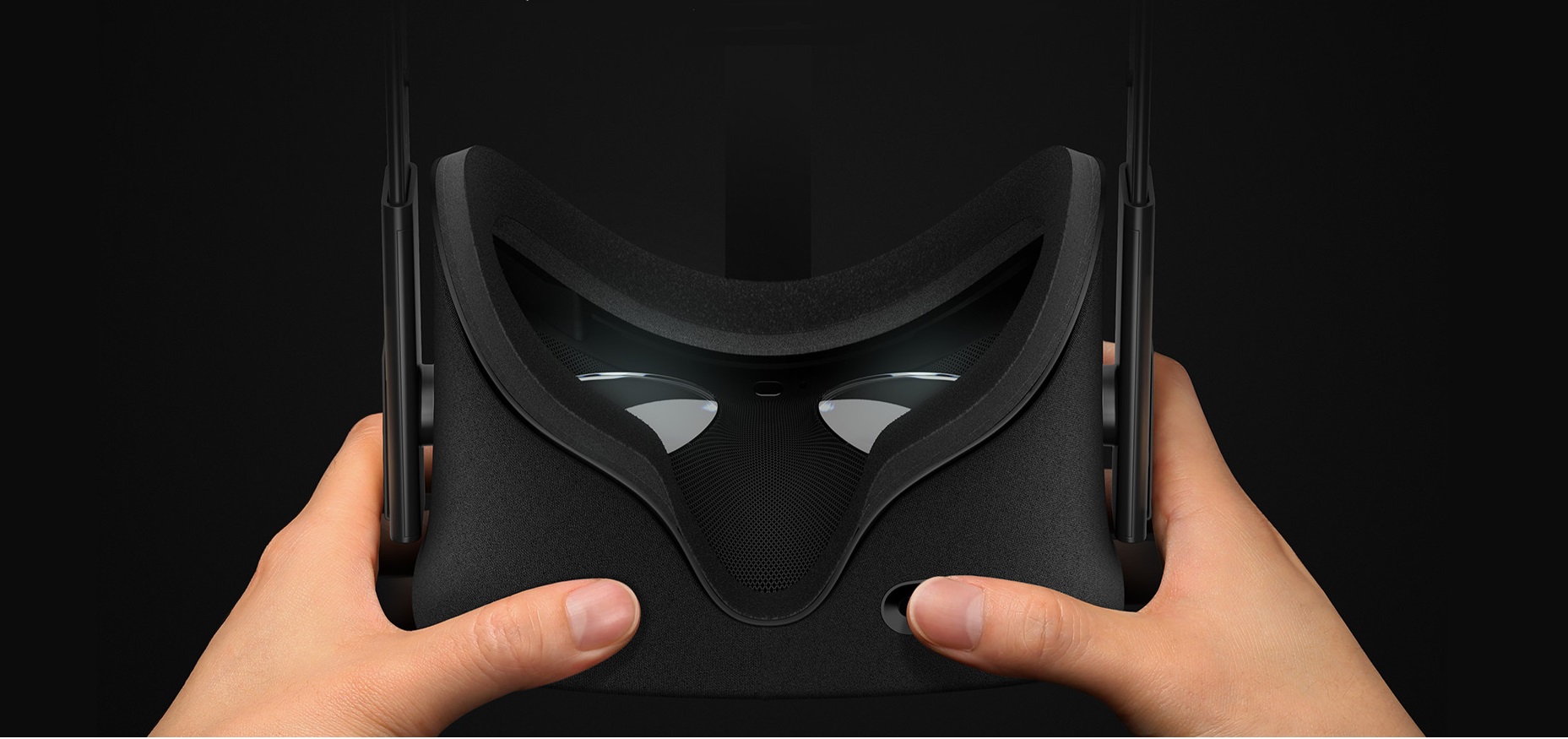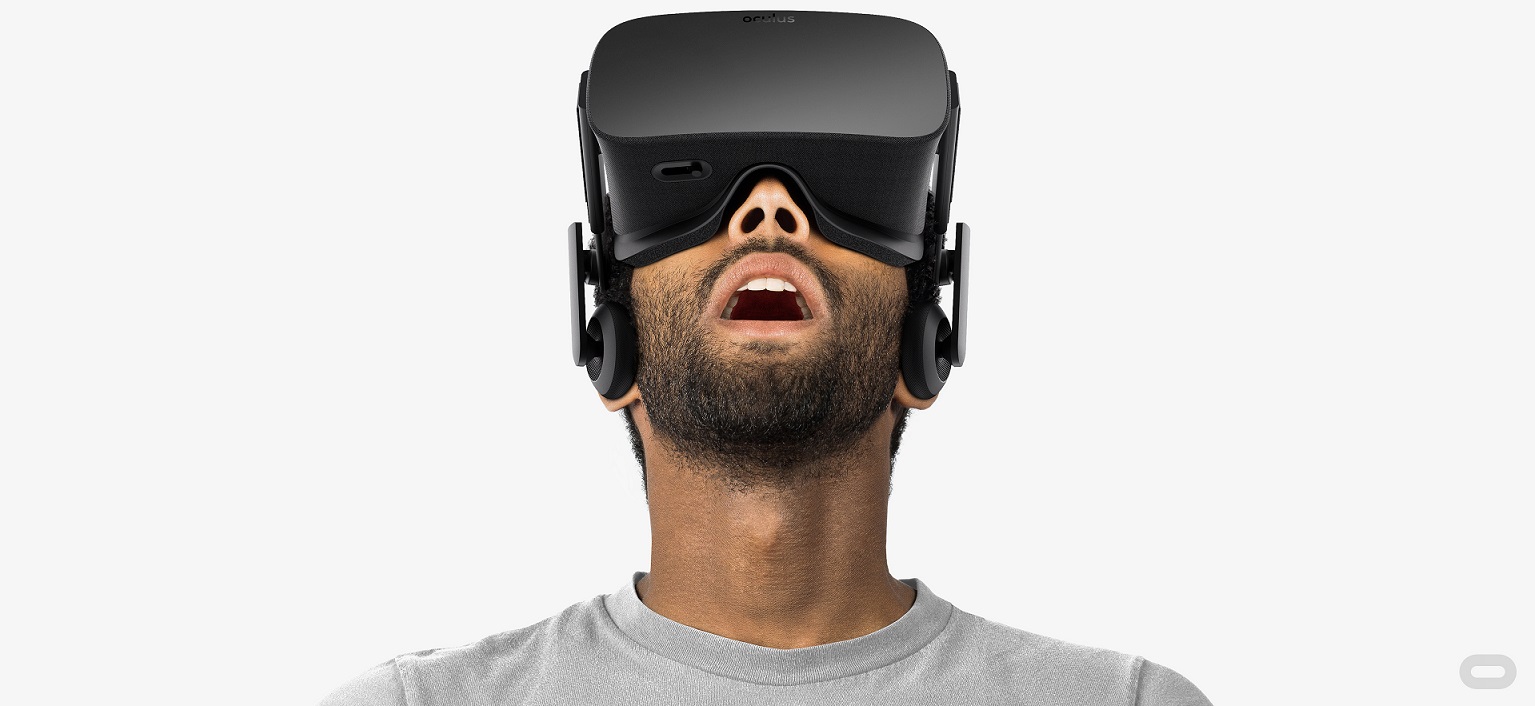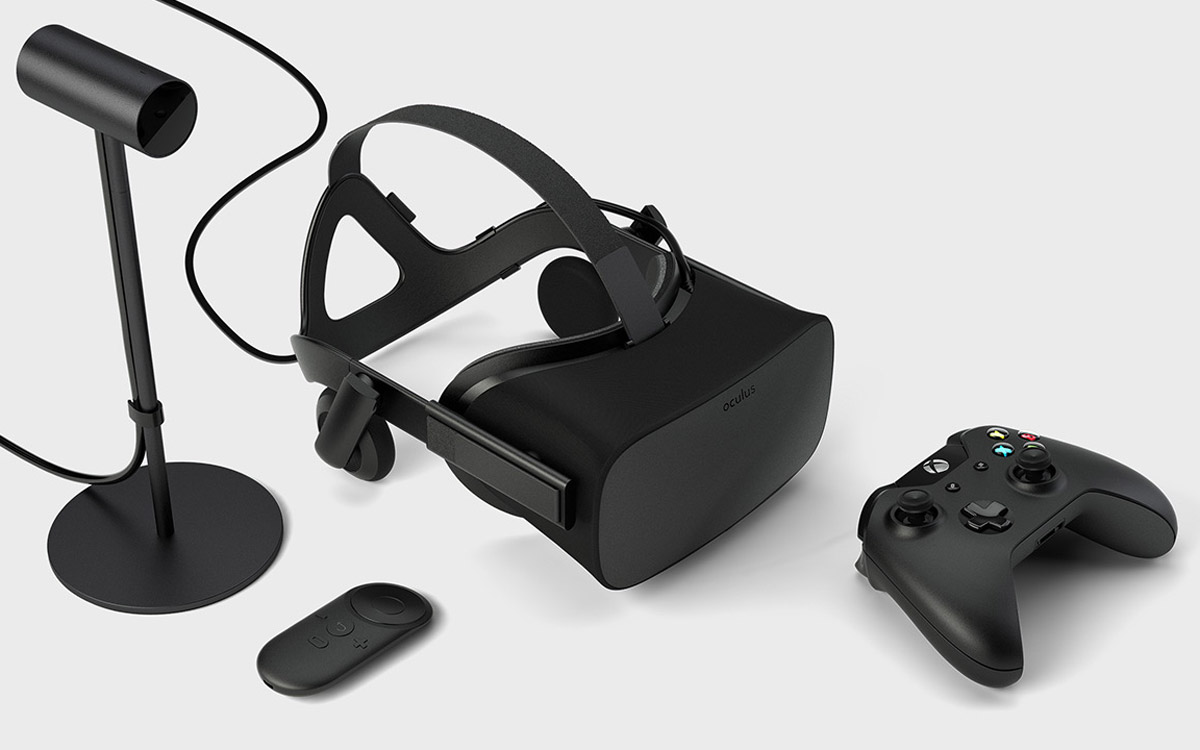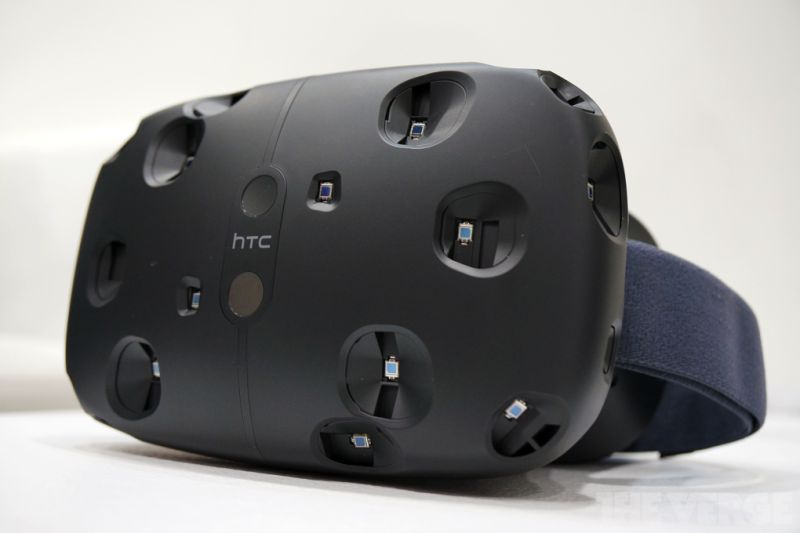Oh, Oculus Rift, what a ride you’ve brought gamers on these past few years. Many of us first heard of this strange new virtual reality device when startup company Oculus launched a Kickstarter campaign back in 2012. The concept of VR had certainly been tried before in gaming via a variety of head-mounted displays (HMDs), but none had ever drawn enough attention to stick around. For most gamers in particular, we simply had memories (or knowledge of) the failed Virtual Boy by Nintendo. Despite these hesitations, the Oculus Rift proved immensely appealing. It overcame the $250,000 funding goal in just a day and ended up generating millions by the campaign’s conclusion. Yep, people really wanted their hands on the very first development kits (DK1).
Tons of stuff has transpired over the years since their Kickstarter. The DK1 and DK2 were both released to developers, as well as obsessed consumers who were willing to buy an early Rift. Between both development kits, the word continued to get about about this cool new VR headset. Thanks in part to YouTube personalities showcasing the device on streams and videos, many more folks were suddenly exposed to the Rift. While the company was iterating on their headset concepts, Facebook bought Oculus for $2 billion. At this time, some backers became angry. After all, they’d poured thousands of bucks into this project to help “the little guy” and not Facebook’s bottom line. Others even specified that they deserved to be given stock in Oculus for funding the company to begin with. That never happened. After all, Kickstarter is not a literal “investment” platform despite the fact that some users feel otherwise.
Some feared that the Facebook connection would force the Rift into a direction which completely ignored gaming in favor of social media shenanigans. Again, it doesn’t appear these fears ever materialized. Sure, there are some social media applications available for the headset, but then again, this HMD was always discussed as a multimedia device rather than a game-exclusive technology. It also appears tons of games are on the horizon. Oculus CEO Palmer Luckey commented that there will be 20 exclusive games with over 100 available by the end of 2016. To me, that sounds like a hefty amount of goodies to play through, even though not every single one will appeal to all gamers.
There have been two key pieces of information which everyone interested in the Oculus Rift have been desperate to know for years: Cost and release date. We finally received this information recently, and it didn’t quite go over well. That base price of $599 is undoubtedly steep – more than any single video game console cost at launch this generation. Not only that, but it is higher than the cost of the Kickstarter reward tiers, DK1, and DK2 were priced. Consider that alongside a comment from Luckey himself that the price would be around $350 a while back and only recently amended that statement, so it makes sense why this shocked people. There’s no doubt in my mind that the tech is incredibly expensive, but even I allowed myself to believe Luckey’s original price window statement and imagined a cost around $400 to $450 for the consumer Rift (CV1). $599 effectively, by his own past words, prices this HMD out of the hands of everyday consumers when he said: “If something’s even $600… then it might as well not exist [to the mainstream].”
Then there’s the release date, or rather, an ever-expanding release window. The very first CV1 units will be shipping out on March 28 to both pre-order folks and Kickstarter backers who previously paid for DK1 reward tiers. Excluding the Kickstarter bunch, those pre-orderers are quite an exclusive bunch. I say this because it was only around 8 minutes after pre-orders went live that the order page suddenly reflected a release window of April 2016 instead of March. As the hours passed, the release month continued to be moved back. It’s now sitting at June 2016. How is this possible? It’s simple, really. Oculus is not limiting the amount of orders they’re willing to take at all. What they’re doing instead of simply grouping up pre-orders (in order that they arrived) and allocating future Rift batches to them. The first in line will be the first batch, while latecomers have to deal with later production batches and, in turn, later shipping dates.
Worried about putting down $599 for a headset but also want to potentially snag one before fall? Well, it might be worth ordering now regardless. Pre-orders are not charged immediately. Unfortunately, there’s not currently a way to tell what month you’re planned to receive the headset, either. This is an issue because many fraudulent orders are being removed right now. As such, the date on the page when you order may not reflect the true date your item ships. Here’s hoping that Oculus updates their order information with planned shipping dates so that folks who need to cancel last minute will be able to instead of being saddled with an early $600+ charge on their card. Depending on where you live, the price increases anywhere from $20 to $200 more due to shipping and country-specific taxes. Yep, this is one expensive gaming accessory alright.
The scary thing is that even the face value of $599 is not the full cost of this technology. According to Oculus, they’re taking a loss on every Rift sold. Facebook have been able to help subsidize the cost and so the price we see is apparently as low as things could feasibly go for the time being. I don’t know about you, but this makes me incredibly frightened about the cost of the upcoming HTC Vive. In any case, it would certainly be interesting to hear how much a Rift actually costs to produce. But that’s enough chatter about pricing, as basically everyone on the internet is already analyzing that component to death. After all, there’s nothing more annoying than finding an item you desperately wanted fall beyond your range of expected expense.
One thing to consider beyond the current price is how much it may cost in the future, and when a new unit will become available. During a recent Reddit AMA, Luckey shared that the lifespan of the CV1 is planned to be “somewhere between a console and a mobile phone, much closer to a mobile phone.” If we take that to mean it’ll come out about as often as new Samsung Galaxy or iPhones then we could potentially see a new Rift model in 2017 or early 2018. With such a quick presumed turnaround, we can only hope that the next model proves cheaper (despite being a technical improvement all around). At worst, it may be the same price for better tech. Who knows, though. If the Rift goes the way of another immensely successful Kickstarter project, the Ouya, then we might never see a new model. Of course, all this is simply speculation as the darn headset isn’t even out yet!
Honestly, the Reddit thread revealed some information we didn’t yet know, but it’s honestly a bit surprising how tight-lipped Oculus remains only a little over two months away from launch. Most of what we saw was Luckey explaining the need for the cost, all while skillfully dodging any actual specifics of the hardware beyond existing reveals. In any case, it’s important to note that the “extras” (Xbox One controller, carrying case, Eve: Valkyrie, and Lucky’s Tale) are negligible when it comes to cost. The big issue is the move from off the shelf internals to basically a completely custom design which has increased the price up over time. With the core device being pricey, one can’t help but wonder about the upcoming content pricing. Supposedly it’ll fall in line with pricing seen in PC and console games. So, maybe some indie titles and experiences will be free or a few bucks, while other VR titles will hit that $60 territory.
Once over the price of the unit, Luckey was able to discuss a few more tidbits about the Oculus Rift and the post-launch plan. For one, a variety of accessories will make their way out from Oculus, including new facial interfaces. There’s also the Oculus Touch controllers which were delayed until later this year and still has no price. Unlike last time, the company are not willing to ballpark estimates for fear of underestimating them again. It’s worth noting that these interfaces will be new things specific to the headset and not like extension cables. After all, you can go and grab a basic USB extension cable or USB 3.0 hub for quite cheap online without a need for expensive “official” ones. Speaking of which, the default cable from HMD to PC is 4 meters… or 13 feet! Considering you’re typically supposed to be sitting or standing still while playing with Oculus (devices such as Virtuix Omni notwithstanding), this is quite a long cord already.
There was a bit of a surprise when pre-orders went live, and that was the inclusion of Oculus Remote for the Rift. Basically, this device is a means for people unfamiliar with game controllers or VR to more comfortably navigate VR experiences. That might include moving through a menu or playing a simple game. The hope is that getting people involved in virtual reality at all will eventually get them to the point that they can handle these experiences purely in VR and without the aid of “friendly” remotes. Of course, Oculus is not the only one in this game right now. HTC have the upcoming Vive, Sony have their PlayStation VR headset, and innumerable others are trying to get a stake in this new section of gaming as well.
One unfortunate aspect of all this diverging virtual reality technology is that there is not one standard in place. In fact, Luckey compared the current situation in the virtual reality scene to this XKCD comic. The sad thing is that most are not working toward true standardization, and instead are branching down their own paths with hopes they manage to have picked the winning solution. The silver lining to this is that both Unreal and Unity, two of the most popular SDKs, allow developers to create games with multiple headsets in mind. In an amusingly obvious brand-building moment, Luckey’s Reddit comments continued to state the Rift is the “best headset with the best content” even when both Rift and Vive are relatively secretive with their tech specifics.
Finally there’s that other matter of the Rift expense that has nothing to do with the headset itself: Your computer. The official recommended specs to run this darn thing are quite high, and likely to be out of range of many gamers who have decent rigs at the moment. Here are the specifics if you’ve not yet seen them (and here’s a link to Oculus’ official tool to check your PC’s requirements):
- graphics card: NVIDIA GTX 970 / AMD R9 290 equivalent or greater
- processor: Intel i5-4590 equivalent or greater
- memory: 8GB+ RAM
- output: Compatible HDMI 1.3 video output
- input: 3x USB 3.0 ports plus 1x USB 2.0 port
- operating system: Windows 7 SP1 64 bit or newer
If your computer fails on just one or two parts, though, there’s still hope for you getting to experience the Rift. Luckey shared that they will not be “artificially restricting” computers if they don’t meet the required specs. As such, you may still be able to play with some apps depending on how close to recommended hardware you fall. With that said, the team at Oculus (and developers) are designing with spec in mind, so your options will be fairly limited. Luckey also stated that prices will, of course, come down eventually but it will primarily be a factor of time and economies of scale (with regard to the prices of PC components becoming cheaper). This comment does not really address the eventuality of the Oculus Rift itself decreasing in price with future iterations, though.
There is still so much information consumers need to know about the Oculus Rift before more will be willing to drop $599 on a headset. Honestly, unless they’re die-hard VR supporters already, it’s probably best to take a wait and see approach. We still need to learn more about the competition, too. Will the HTC Vive be the ultimate headset, even at a premium price? Will PlayStation VR prove the best consumer-friendly option for console gamers? It might be best to wait for the dust to settle, though us early adopters out there will need to pick up a Rift as soon as humanly possible.










Wow, my PC misses the system requirements. Whaaaa? I’m able to run most things cranked up very comfortably.
One minor erratum I would like to make in your article, you has written that the Facebook buyout was for 2 Million, when in fact it was actually for an considerable more impressive 2 Billion. Which was a good part of why some the initial project investors were feeling a bit shafted by the deal. “I thought I was funding your projects development, not your buyout’ I think was one of the more memorable posts.
Thankfully, as you had in your last article mentioned it seems they are giving out free 600$ Rifts to those who backed the project though developer kits, which seems to have smoothed a fair bit of the ruffled feathers and is a nice token to acknowledge those who’s support made these guys incredibly, almost unbelievably rich.
Still quite the pricey gaming accessory at 600$, but looking at eBay and what the DK1’s and DK2’s are selling for (roughly around 400-500$) perhaps they are not too far out? It seems it is full speed ahead in gaming development and support for 2016, which is certainly good news for those who have or are considering purchasing a Rift.
Rumor has that the Rift is supposed to be tying in at some point with motion sensor technology, for a more immersive VR experience, which if true suddenly makes the 13-foot cord much more logical with users flailing about 😀
As Gred Micek had said, the system specs are indeed steep, but thankfully not set in stone either. Those I suspect that if one can drop 600$ on a headset you probably have a higher end PC system already.
It certainly will be interesting to see where this technology eventually goes.
Oop, good catch on the M vs B! Corrected it, and forced Marcus to use a virtual boy.
I tried a game recently with the Rift that was a strategy game and it was fantastic. So while I have minimal desire to play an FPS or something with one, I dream of playing a great racing game and a strategy game with one. I’ll likely hold off til the next generation though.
Aaaaah! What a difference one letter makes. Thanks for catching that, and yeah, had Facebook bought them for just $1 mil it would have been the deal of a lifetime. ;P
The fact that Kickstarter devkit backers are receiving the consumer rift makes me wish I had backed the campaign when it was live. Honestly, though, no one could have ever predicted all this would happen. As of right now, I’m happy with my Gear VR “powered by Oculus” at the moment…
[…] Price and power of Oculus rift […]